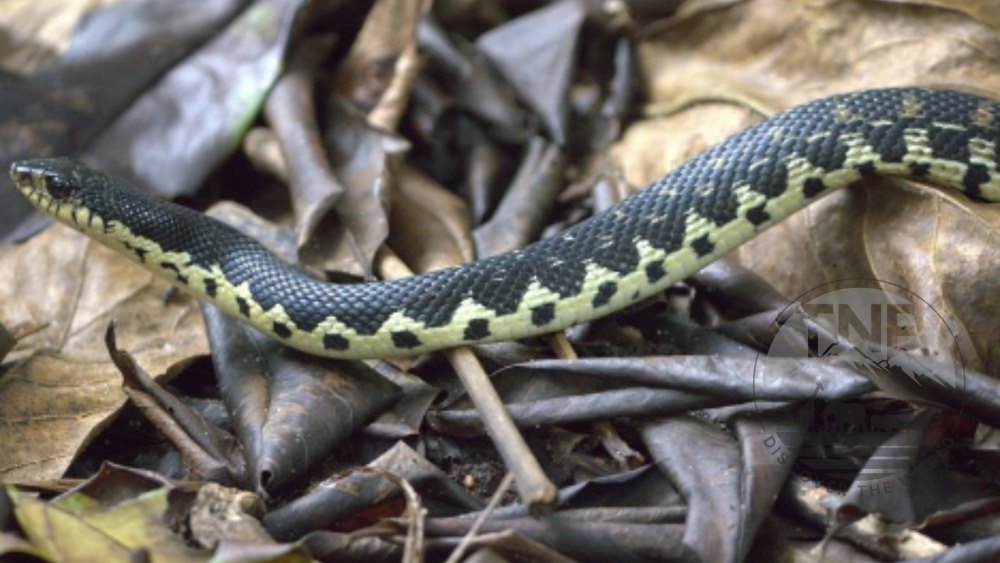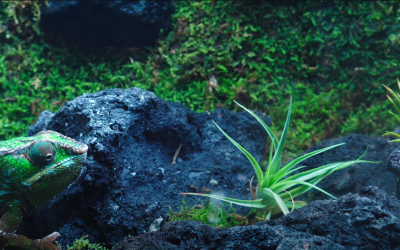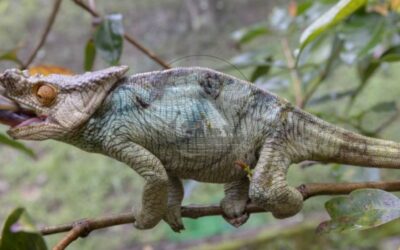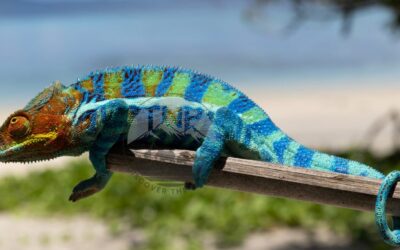An Adventure of the Madagascar Snake Species
Madagascar conjures up images of lemurs with giant eyes and dancing sifakas. But for a wildlife photographer like me, this island paradise holds a different kind of magic: Madagascar snakes.
Madagascar boasts a mind-blowing variety of these slithering creatures, many found nowhere else on Earth. From tree-dwelling hunters with bizarre “noses” to boa constrictors big enough to make your heart skip a beat, the snakes of Madagascar are a photographer’s dream.
Join me on a journey through this snake paradise, where every slithering friend has a story.
Before I begin, don’t forget to check out the rich diversity of Madagascar animals.
Habitat Variety and Snake Distribution
Having visited several times, I’ve been fortunate to capture some of the most intriguing and rare species of snakes, each perfectly adapted to their distinct environments. Let me take you through the different habitats you can find here and how these environments have shaped the evolution of snake species across the island.
Habitat Variety in Madagascar
Madagascar hosts a remarkable range of habitats with characteristic flora and fauna. The primary habitats include:
Rainforests
These lush, dense forests are found mainly in the eastern part of the island. The canopy is thick, providing ample cover and humidity – a perfect setting for both the wildlife and a photographer aiming to capture the essence of Madagascar’s biodiversity.
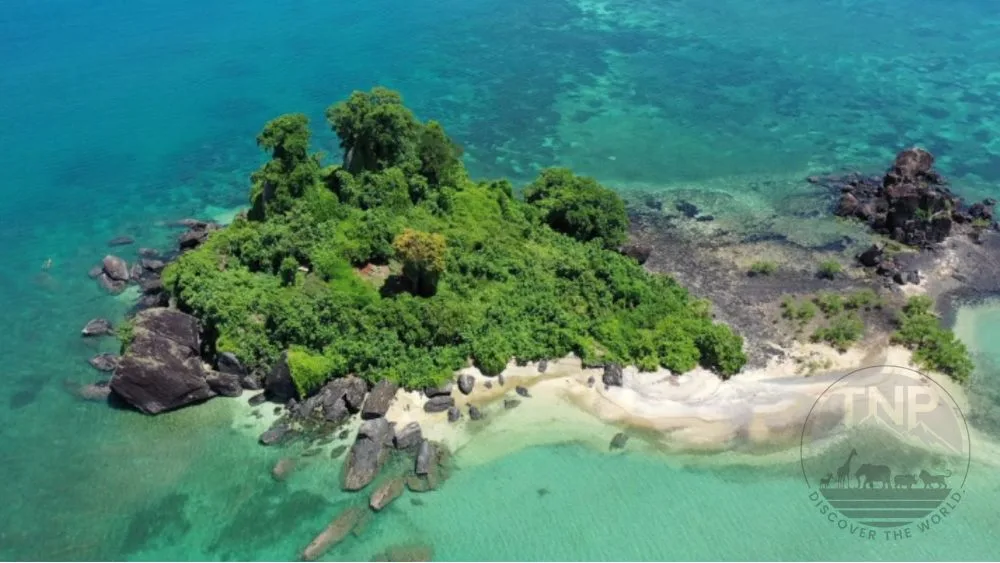
Check Out The World of Madagascar Birds
Dry Forests
In contrast, the western and southern parts of the island are home to dry forests, which experience lower rainfall and have a more open canopy. This environment offers a different visual aesthetic and houses species that can endure longer periods with minimal water.
Spiny Thickets
Perhaps the most visually striking, the spiny thickets are dominated by cacti-like plants adapted to the arid south. This habitat looks otherworldly and is a phenomenal backdrop for photography, especially during the golden hours of sunrise and sunset.
Distribution and Adaptations of Snake in Madagascar
The snakes of Madagascar have adapted remarkably to these varied environments:
Arboreal Snakes
In the rainforests, you’ll find several species of arboreal, or tree-dwelling, snakes. These species, such as the Madagascar tree boa, have adapted to life off the ground. They are equipped with long tails to secure themselves to branches, providing opportunities for high-canopy photography.
Burrowing Snakes
Some snakes have followed a different evolutionary path in the dry forests and prickly thickets. Certain species, such as the blind snakes of Madagascar, have adapted to live underground.
These snakes might be challenging to shoot because they are frequently tiny and prefer to live underground. Photographing a burrowing snake as it rises out of the ground can be satisfying, emphasizing the sharp contrast between the snake and its arid, harsh surroundings.
Each visit to Madagascar offers a unique perspective on how life has adapted in isolation. Understanding these habitats and the snakes’ behavior enriches the experience for a wildlife photographer. It enhances the ability to anticipate and capture those once-in-a-lifetime shots.
Check out Madagascar Guide By A World Travelling Photographer
9 Interesting Snakes of Madagascar
The Unique leaf-nosed snake (Langaha Madagascariensis)
This snake is a bit special because of its unique nose. It has a nose that looks like a leaf, which helps it blend in with its surroundings. This camouflage helps it hide from predators and sneak up on its prey.
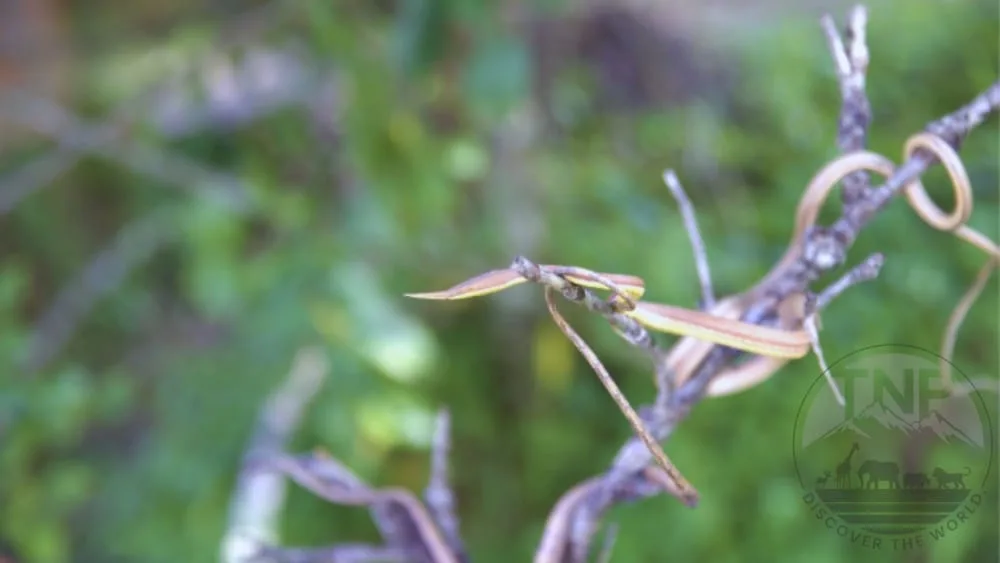
The leaf-nosed snake lives in the forests of Madagascar, an island off the coast of Africa. Madagascar is an incredible place with lots of different animals and plants.
These snakes aren’t big—usually about the length of a ruler—so they’re not too scary. Leaf-nosed snakes like eating bugs and small animals, which they catch by sneaking up on.
Even though their leafy noses might make them look a little funny, leaf-nosed snakes are incredible creatures that play an essential role in the forests of Madagascar.
Madagascar ground boa (Acrantophis Madagascariensis)
These boas are enormous, sometimes growing up to six feet long! They have strong bodies and are excellent hunters. They eat small animals like birds, rodents, and other reptiles. Even though they’re big and powerful, Madagascar ground boas are not venomous.
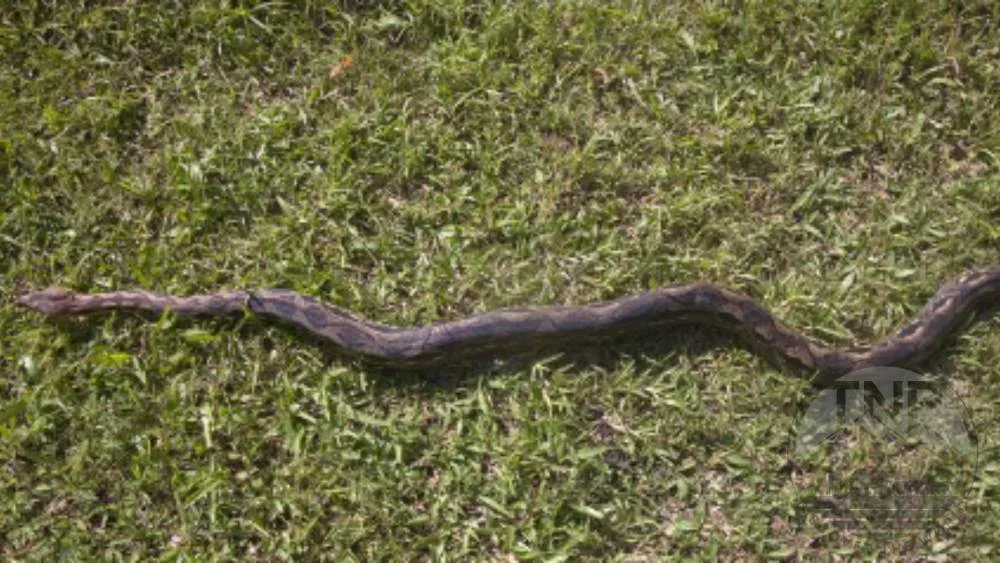
These boas live in different habitats across Madagascar, from forests to grasslands. But if you want to see them, I suggest you to go to the western Madagascar. They’re good at hiding and blending in with their surroundings, making them hard to spot.
Madagascar ground boas are an essential part of the island’s ecosystem. They help control small animal populations and maintain the balance of nature.
Venomous Madagascar Tree Boa (Sanzinia Madagascariensis)
During my trip to Nosy Be in 2019, I saw a snake while exploring with a Malagasy friend. Not knowing its name, my friend identified it as the Tree Boa. Although it is a bizarre snake and dangerous for humans, I could not stop holding it!
The Madagascar Tree Boa is often mistaken for its larger, ground-dwelling cousin, the Madagascar Ground Boa. This arboreal specialist has adapted its lifestyle to become the graceful ruler of the rainforest canopy.
The Fascinating World of Madagascar Day Geckos
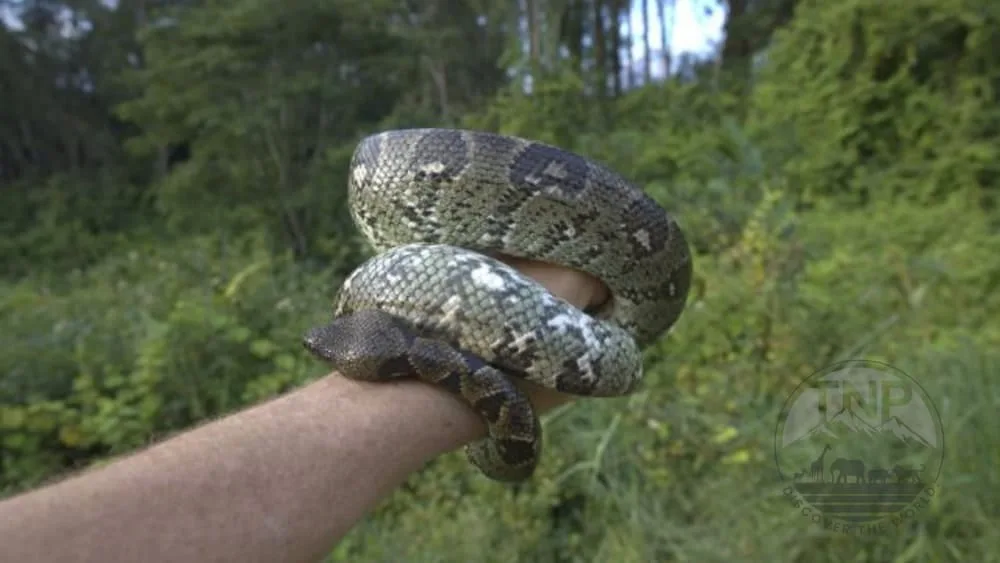
These boas have long, thin bodies and tails that help them move around in the branches. They come in different colors, like green, brown, red, or orange, which allows them to blend in with the leaves.
At night, they hunt for food like birds, bats, and small mammals. They catch their prey by wrapping around them and squeezing them, but they don’t have poison. The primary food sources for Madagascar tree boas are small, ground-dwelling animals, bats, birds, and other mammals & amphibians.
One cool thing about these Madagascar boa snakes is their body temperature control. Depending on their needs, they move between sunny and shady spots in the trees to stay warm or cool.
Even though they’re mainly in the trees, they sometimes come to the ground to find food or mates. This flexibility helps them survive and see what they need to live.
The Giant Madagascar Hognose Snake (Leioheterodon Madagascariensis)
During my travels in Madagascar, I had the incredible opportunity to encounter a Madagascar hognose snake in its natural habitat. It was a thrilling experience to observe this snake up close, with its sandy-colored scales blending seamlessly into the forest floor.
There are additional snake species within the Leioheterodon genus, such as the blonde hognose snake and speckled hognose snake. I’ve only managed to see the giant hognose snake.
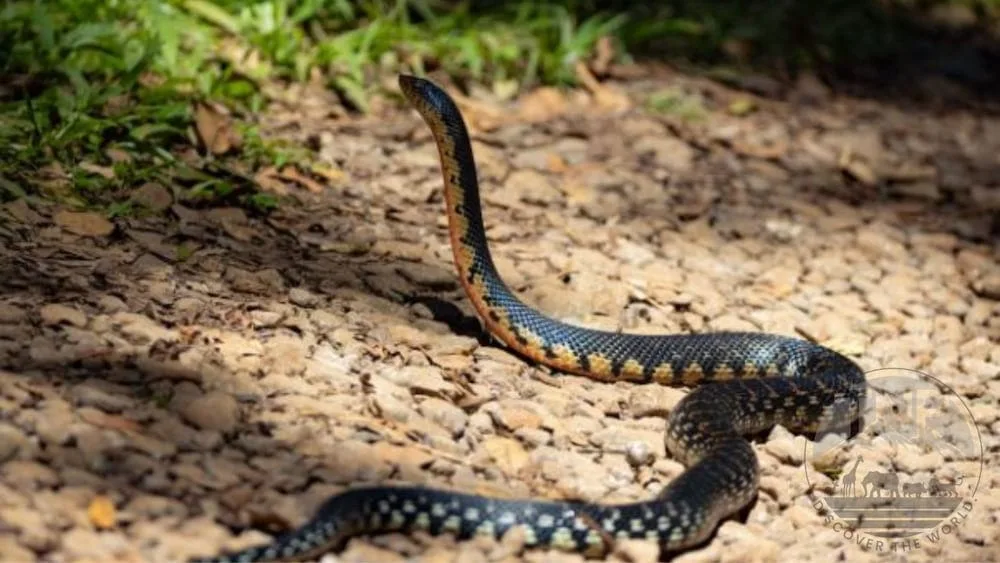
The Madagascar hognose snake, scientifically known as Leioheterodon Madagascariensis, is a unique species endemic to the island of Madagascar. These snakes are known for their distinctive upturned nose, which give them a pig-like appearance and inspire their name.
Despite its small size, the hognose snake exuded quiet confidence as it slithered through the leaf litter, searching for prey.
One of the most memorable aspects of encountering the Madagascar hognose snake was its behavior. The Madagascar hognose snake is known for its dramatic defensive displays.
It may flatten its neck and even play dead to deter potential predators when threatened. Witnessing these behaviors firsthand was awe-inspiring and humbling, reminding me of the ingenuity and adaptability of nature’s creatures.
14 Amazing Madagascar Chameleon: The Unique Adaptations of Malagasy Reptile
The White-lipped Smooth Snake (Liophidium Torquatum)
Madagascar is known for its treasure trove of unique and fascinating creatures, and the Liophidium Torquatum, also known as the White-lipped Smooth Snake, is no exception. This small, slender snake might not be the flashiest reptile on the island, but its secretive lifestyle and adaptations make it an interesting part of the Malagasy ecosystem.

Nine of the lamprophiid snakes of the genus Liophidium are native to Madagascar, and one is found only on the island of Mayotte. The White-lipped Smooth Snake can be found in several areas of Madagascar, primarily in the island’s northern and western regions.
Liophidium torquatum is a relatively small snake, typically reaching only 12-18 inches long. Despite its size, it’s a skilled hunter. They primarily feed on insects, worms, and other invertebrates, using their keen sense of smell and sharp eyesight to locate prey.
Unlike some of Madagascar’s flashier snakes, Liophidium Torquatum prefers a life underground. They spend most of their time hidden beneath leaf litter, rocks, and logs. This secretive lifestyle makes it tricky for them to spot in the wild.
The blind snakes in Madagascar (Typhlopidae)
Madagascar, renowned for its unique wildlife, boasts a hidden treasure – the Typhlopidae, a family of blind snakes. Unlike their slithering cousins with keen eyesight, these remarkable creatures navigate the world in complete darkness.
You might wonder how a blind snake can survive in a big canopy like Madagascar for a million years! Well, it’s possible! When dinosaurs were extinct, the diurnal snake had been living in Madagascar for over 65 million years!
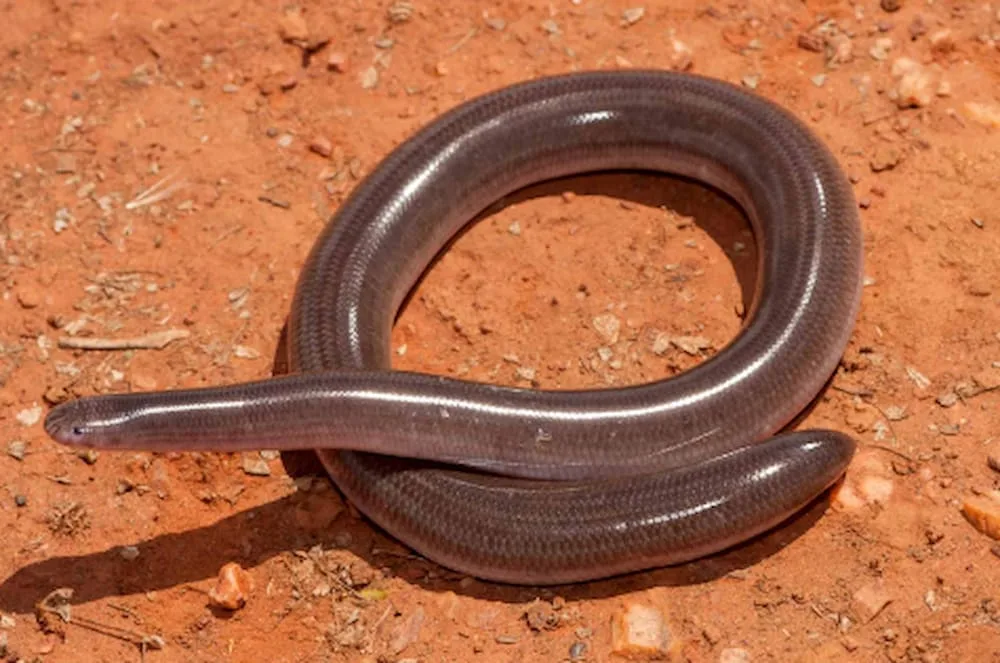
Blind snakes in Madagascar are perfectly adapted for life below the surface. Their slender, worm-like bodies allow them to burrow easily through loose soil and leaf litter. By keeping insect populations in check, they help maintain Madagascar’s ecological balance.
Their eyes are either vestigial (tiny and non-functional) or completely covered by skin, rendering them useless for sight. However, these snakes don’t need eyes to thrive – they rely on other adaptations to navigate their underground world.
A Snake with Cats Eyes (Madagascarophis Colubrinus)
It may sound like an adorable snake, but I must inform you it’s one of the most venomous snakes in Madagascar! They live in different places all over the island, from the dense forests in the east to the dry forests in the south. Sometimes, they’re even seen in places people make, like gardens and buildings, showing how well they can adjust to where they live.
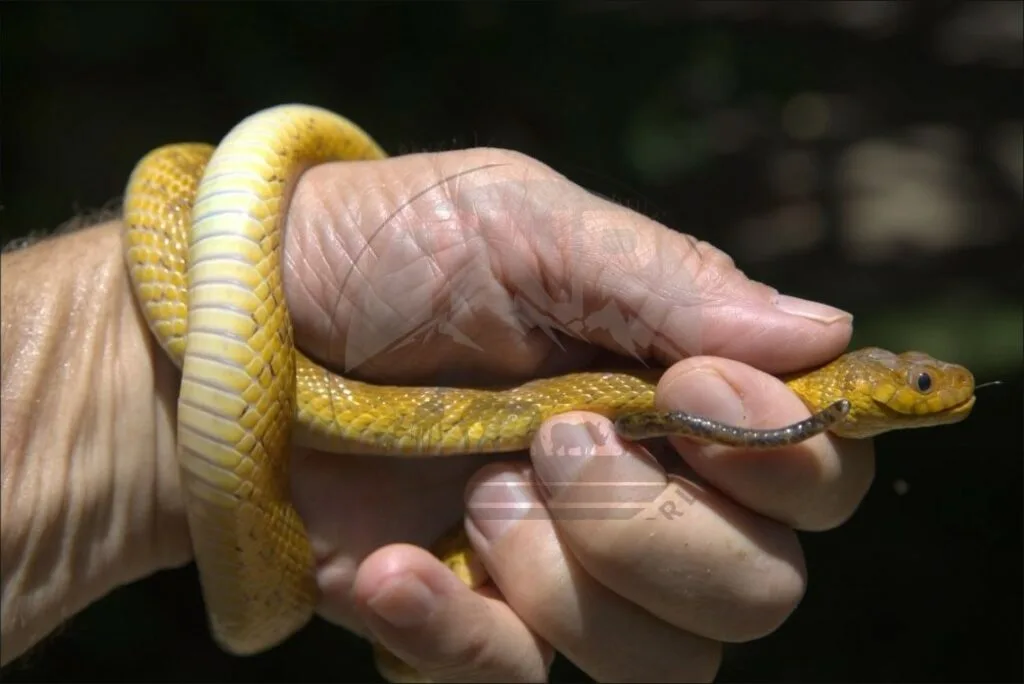
The Madagascar Cat-Eyed Snake is primarily terrestrial and nocturnal, which means it comes alive at night. Its broad, vertical pupils are ideal for seeing in low-light environments. At night, it becomes active as a predator, using its excellent eyesight and superb climbing abilities to roam the treetops and forest floor in pursuit of prey.
Madagascar cat-eyed snakes are carnivores, which means they eat other animals. Their diet mainly consists of small mammals, birds, lizards, frogs, chameleons, and geckos. They are skilled hunters and use their excellent eyesight to locate prey. Once they find their target, they use their sharp teeth and powerful jaws to catch and subdue it.
Best Chameleon Terrarium: DIY or Store-bought Chameleon Cage
Ranomafana Big-headed Snake (compsophis laphystius)
The Ranomafana big-headed snake, scientifically known as Madatyphlops decorsei, is a different species of blind snake found in Madagascar. These snakes are known for their distinctive large heads and small bodies, which help them to burrow efficiently underground.
Despite their imposing name, Ranomafana big-headed snakes are harmless. Instead, they rely on their sharp teeth and powerful jaws to subdue their prey, mainly of small insects, worms, and other invertebrates found in the soil.
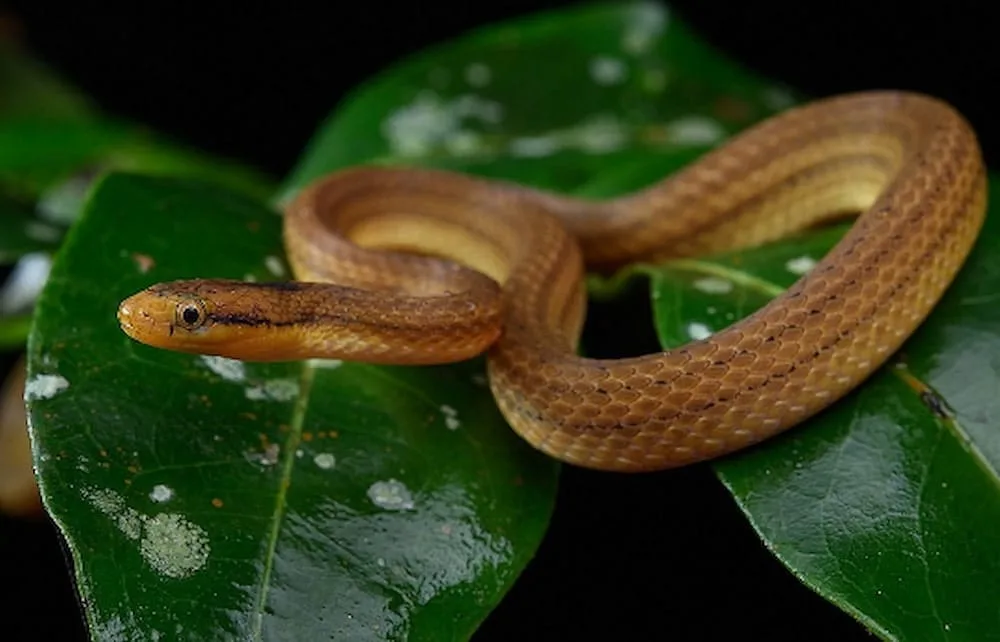
These snakes are primarily nocturnal, meaning they are most active at night. During the day, they can hide in leaf litter or burrow underground to avoid predators and extreme temperatures.
Overall, while the Ranomafana big-headed snake may not be as well-known as other species of snakes, it is nonetheless an important and fascinating part of Madagascar’s rich biodiversity.
lateral water snake (Thamnosophis lateralis)
During a great trip to Madagascar, I had the incredible opportunity to see the lateral water snake in its natural environment. It was a peaceful morning, and as I wandered along the banks of a winding river, I noticed a slim snake flowing gracefully through the water. Its olive-colored scales glistened in the sunlight, merging nicely with the water vegetation.
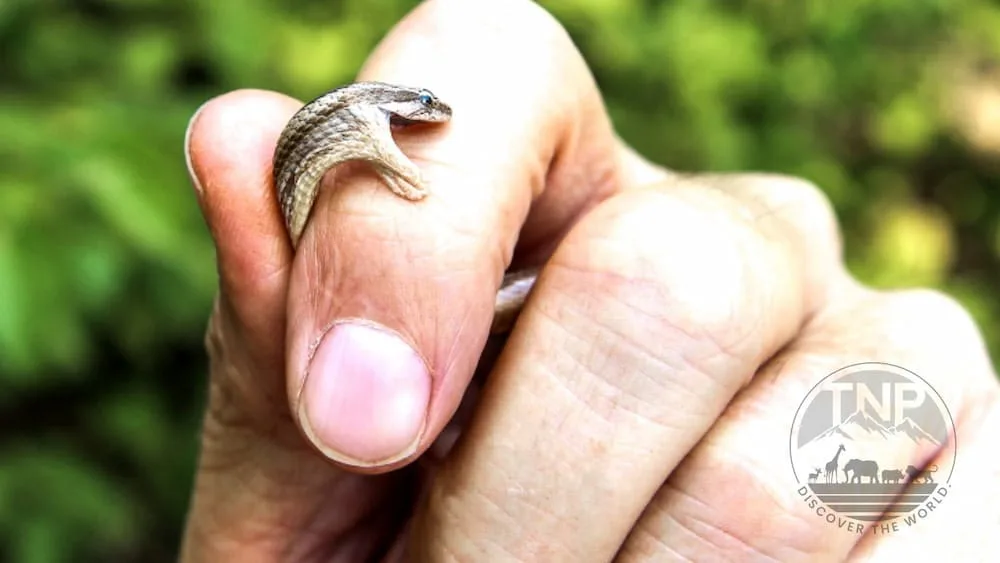
As its name suggests, it is often associated with water habitats such as rivers, streams, and marshes. Its sleek, streamlined body glides effortlessly through the water, propelled by powerful lateral undulations – side-to-side movements that create a wave-like motion.
Threats to Madagascar’s Snakes
Madagascar is home to incredible wildlife, and its snakes are no exception! From slithering giants to leaf-nosed wonders, these scaly creatures play a vital role in the island’s ecosystem. But sadly, many of them face serious threats. Here’s a look at the biggest dangers these amazing snakes are slithering against:
Losing their Homes: Deforestation is the one big reason Malagasy snakes are threatened. These forests are the homes of many snakes, providing them with shelter, food, and hiding places. Without these forests, they have nowhere to live and struggle to survive.
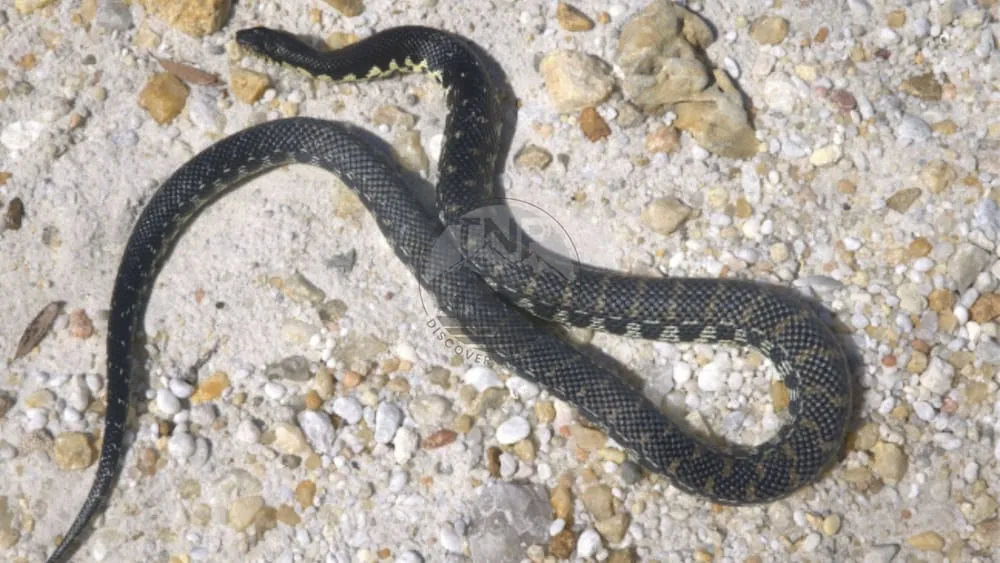
Food Shortage: When forests disappear, so do the smaller animals – insects, lizards, frogs – that many snakes rely on for food. This leaves the snakes hungry and struggling to find enough to eat.
Invasion of the Alien Snakes: Some people have brought snakes from other countries to Madagascar as pets or by accident. These “alien” snakes compete with the native snakes for food and space, making it even harder for the Malagasy snakes to survive.
Climate Change: Our planet is warmer, affecting Madagascar’s weather patterns. This can disrupt the delicate balance snakes need to thrive, making it harder for them to find food, reproduce, and stay healthy.
Conservation Efforts
Madagascar’s snakes face many threats, but dedicated efforts are underway to ensure their survival. Here’s a look at some key initiatives:
Habitat Protection
National Parks and Reserves: Madagascar boasts numerous protected areas, such as Ranomafana National Park and Andohahela National Park. These areas provide safe havens for snakes and their prey, allowing populations to recover from habitat loss elsewhere.
Corridor Creation: Conservation groups are working to create corridors of protected land between existing parks. This allows snakes and other wildlife to safely move between areas, promoting genetic diversity and preventing isolated populations.
Community Involvement: Local communities play a crucial role in protecting forests. Programs that educate villagers about the importance of snakes and provide alternative sources of income can help reduce deforestation and promote sustainable land management practices.

Research and Monitoring
Species Surveys: Scientists are conducting surveys to identify snake populations, understand their distribution, and assess their conservation status. This data is vital for developing effective protection strategies.
Captive Breeding Programs: Captive breeding programs offer a lifeline for critically endangered species. These programs can help maintain populations and reintroduce healthy snakes into the wild when suitable habitat is available.
Monitoring Programs: Regular monitoring of snake populations allows conservationists to track changes in numbers and identify threats early on. This data helps them adapt their strategies and focus resources on the most vulnerable species.
Raising Awareness
Education Programs: Educating people about snakes’ unique and vital role in the ecosystem is crucial. Educational programs can be targeted at both local communities and international audiences.
Ecotourism: Responsible ecotourism initiatives can raise awareness about snake threats and generate funds for conservation efforts. Tourists can visit protected areas, learn about the importance of snake conservation, and enjoy the beauty of Madagascar.
Social Media Campaigns: Utilizing social media platforms to share captivating stories and images of Madagascar’s snakes can raise awareness and inspire people to get involved in conservation efforts.
International Collaboration
Global Conservation Organizations: International organizations like the World Wildlife Fund (WWF) and Conservation International (CI) provide funding, expertise, and support for conservation efforts in Madagascar.
Collaborative Research: Scientists worldwide collaborate to research Madagascar’s snakes, share knowledge, and develop effective conservation strategies.
The Road Ahead
The fight to protect Madagascar’s snakes is ongoing. By supporting these efforts and raising awareness, we can help ensure these fascinating creatures continue to slither and thrive in their island paradise. Every little bit counts, from donating to conservation organizations to spreading the word about the importance of snake conservation
Conclusion
So there you have it—Madagascar is home to many snakes, and I have only scratched the surface. There are many species that I’ve not mentioned, like the intriguing pseudoxyrhophiinae, dromicodryas Bernieri, lycodryas, sea snake, phisalixella, parastenophis betsileanus, xenotyphlopidae, pseudoxyrhopus tritaeniatus, etc. Every day, scientists uncover new species.
These snakes represent only a tiny portion of the island’s incredible biodiversity. Madagascar’s snakes have evolved to various habitats, from lush rainforests to parched deserts, and they serve critical roles in their ecosystems.
As we learn more about these incredible species, we must safeguard their habitats and ensure their existence.
Creating the Perfect DIY Chameleon Tank For An Optimal Habitat
FAQs Of Madagascar Snakes
Where do the snakes of Madagascar live?
Madagascar snakes live in various habitats across the island, including rainforests, dry forests, grasslands, and even human-made structures like gardens and outbuildings. Some species specialize in specific habitats, while others are more adaptable and can be found in different environments.
Are there any venomous snakes in Madagascar?
Yes, there are venomous snakes in Madagascar. While the majority of snakes on the island are non-venomous, there are a few venomous species, including the Malagasy cat-eyed snake, the Hallowell’s hognose snake, and the Madagascarophis Meridionalis, which belong to the family Lamprophiidae.
What is the most venomous snake in Madagascar?
The most venomous snake in Madagascar is debatable, as venom potency can vary among species. However, one of the venomous species on the island is the Malagasy cat-eyed snake, which belongs to the family Lamprophiidae.
Where do leaf-nosed snakes live?
Leaf-nosed snakes, also known as Langaha Madagascariensis, are endemic to Madagascar. They primarily inhabit the island’s forests, including rainforests, dry forests, and spiny forests. These snakes are arboreal, meaning they spend most of their time in trees, using their leaf-like noses to blend in with their surroundings.

